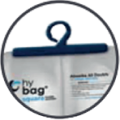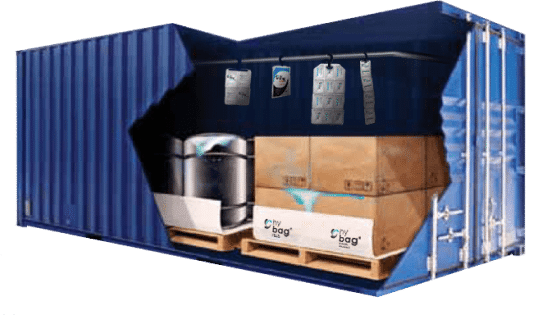Moisture damage is one of the leading causes of cargo loss during transportation. Hybag desiccant bags provide maximum protection against moisture damage, container rain, condensation, and relative humidity buildup, ensuring your shipments arrive in optimal condition. Designed for efficiency and durability, Hybag absorbs more moisture while taking up less space, thanks to its innovative breathable membrane technology and fast-acting gel formula.


Maximum Absorption

High-Tech Breathable Fabric

State-of-the-Art-Fastening-System

Zero Leakage—Guaranteed

Unrivalled Absorption

State-of-the-Art-Enclosed-Hook

Hybag desiccant bags are engineered to outperform traditional moisture control solutions. Whether you’re shipping food, pharmaceuticals, textiles, or electronics, Hybag ensures your cargo stays dry and protected.
Choose from four specially designed Hybag models to match your specific shipping requirements. Each variant offers high-performance moisture absorption in various shapes and sizes.

A versatile desiccant bag with a large surface area for maximum moisture absorption. Ideal for long-haul shipments.

A flexible strip format that can be easily placed along enclosures, container walls, or pallets for targeted moisture control.

An environmentally friendly option designed to absorb moisture efficiently while reducing environmental impact.

A low-profile desiccant bag perfect for tight spaces where vertical clearance is limited.
Hybag desiccant bags use advanced moisture absorption technology to capture excess humidity in shipping containers. The breathable membrane allows relative humidity to pass through, where it is quickly converted into a stable gel, ensuring it remains locked in place without leakage. This process prevents condensation, protecting sensitive cargo from mold, corrosion, and packaging degradation.
Hybag also offers desiccant packets, silica gel desiccant, and clay desiccant options to suit different cargo types. For high-precision applications, our molecular sieve desiccant and silica gel beads provide excellent moisture control, making them ideal for sensitive electronics, pharmaceuticals, and pet food packaging.

Have a question? We’re here to help.
© 2025 Eurolog Packing Group